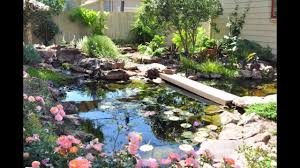 Parks and other green spaces play a vital role in the health of cities and in the health of the people who inhabit them. The trouble with city green spaces, however, is that they can be expensive to maintain and install. Landscapers are trying to figure out a cheaper way to maintain and instal these designs. With cities growing at an ever faster rate, the need for green spaces is growing as well. Sustainable green spaces may be the answer for cities on a tight budget looking to improve their parks and recreation.
Parks and other green spaces play a vital role in the health of cities and in the health of the people who inhabit them. The trouble with city green spaces, however, is that they can be expensive to maintain and install. Landscapers are trying to figure out a cheaper way to maintain and instal these designs. With cities growing at an ever faster rate, the need for green spaces is growing as well. Sustainable green spaces may be the answer for cities on a tight budget looking to improve their parks and recreation.
Green Spaces Can Save Money Immediately
Before even getting into the benefits that sustainable green spaces offer in terms of human health and the local environment, it is important to consider how they can directly save a city money. Often, green spaces are seen as an expense both because of capital requirements for installation and because they take up space that could be used by tax-paying entities like businesses and residential units. In truth, green spaces can actually save a city money, even over high-value commercial enterprises, by reducing urban heat, providing areas for storm water run-off, reducing the need for lighting, easing congestion, and by serving as areas for energy production.
How does reducing urban heat save money? It saves money by reducing demands of things like cars, air conditioners, and refrigerators on city infrastructure. Less demand means less failure of critical framework, less need to upgrade due to population growth, and fewer emergency repairs. Just look to the city of Seoul in South Korea, which saw billion-dollar returns after tearing out highways to install green spaces. The city saw cooler temperatures, increased use of public transport, adaptive re-use of buildings, and increased tourism.
Green Spaces Can Save Money in the Future
Sustainable landscape design is about installing low maintenance, highly durable features. This includes everything from plants to hardscapes. Though the upfront cost of sustainable landscaping can sometimes be higher, the long-term costs are almost always lower.
Sustainable green spaces were originally conceived to benefit the environment, but they just as easily benefit the bottom line of urban budgets the world over because they require less maintenance, less water, and less pest control. They also stand up to the rigors of constant use better, which means they do not have to be replaced or rejuvenated as often. Combined with the immediate benefits of any green space, the added benefits of sustainable green spaces can mean that the installation of parks pays dividends for years and decades.
Final Notes
Green spaces help with everything from heat dissipation to air pollution control. By providing a place to exercise, parks also help to fight obesity and even get people out into the sun for a little vitamin D synthesis. More parks aren’t always the solution though, particularly in cities where space is already limited. In these situations, upgrading existing parks and converting “grey spaces” to parks makes more sense. Grey spaces include rooftops, unused roads, and even storm drains. New York City’s High Line Trail is a good example of how a grey space was turned into a park that has now become a major attraction.
Resources
http://theconversation.com
http://www.ecoiq.com
http://www.neighbourhoodsgreen.org
http://theconversation.com
